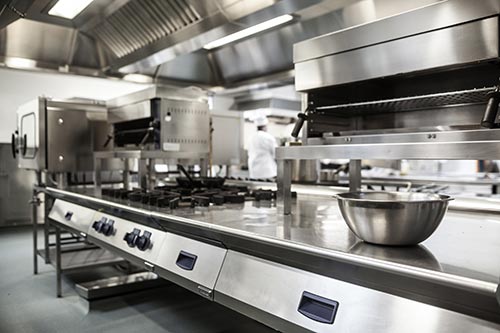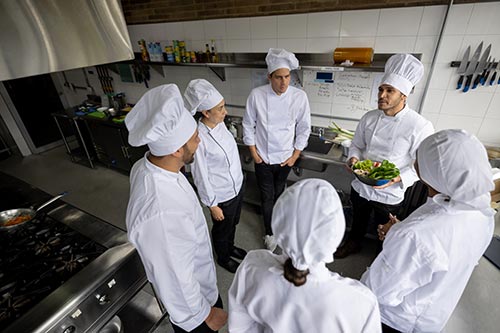Running a restaurant is the business equivalent of juggling very sharp knives while riding a bicycle.
Running a successful restaurant means you need to know your business inside and out.
It’s not just about the food; it’s about the people you hire, the publicity you get, the equipment and building and a hundred other shiny knives that you need to control while pedalling away.
A restaurant can be roughly divided into front of house and the kitchen, and each has pinch points – areas that can rapidly escalate into serious problems if they aren’t anticipated and managed well in advance.
Let’s start with the kitchen, which is the heart of your business and needs some TLC from the very beginning.
These are six pain points that don’t often get discussed – but from a chef’s point of view, they’re vital.
1. Supply Management
The quickest way to drain your funds into a sad puddle of lukewarm gazpacho is mismanaging your food supply.
Buying poor quality ingredients, too little, too much, and poor portion control will all result in a very unhappy kitchen.
One of the biggest mistakes newcomers make is piling massive portions onto their diner’s plates. When more than a quarter of your portions come back with requests for a doggy bag, or worse, get scraped into the bin, your food portions are too big.
Another common mistake is undersized portions, leaving your diners feeling hangry and cheated.
Aim for generosity without leaving your guests needing a wheelbarrow to leave the premises.
Don’t compromise on quality. If you can’t get a decent cut of meat or fish that’s the star of one of your dishes, that dish needs to come off the menu for the night.
Margins in the restaurant world can be very thin, so set a reasonable budget and stick to it.

2. Equipment
Invest in the best quality equipment you can find and avoid gimmicks.
Remember that you’re going to need spares of everything from knives to zesters. A working kitchen is a brutal environment, and things break.
(There might be a sadder creature than a chef who just watched his favourite knife part company with the handle, but it’ll be hard to find.)
Good, reliable equipment means less stress and pressure in the middle of a busy shift.
Kitchen Stations
The key word with kitchen stations is efficiency.
It’s one of the reasons kitchen brigades were modelled after military structures, with the commander in chief (executive or head chef) at the very top and the lowly private (kitchen porter) at the opposite end of the rankings.
If you don’t have well defined and organised stations, everything is going to collapse as soon as you hit a busy patch.
From the way chits are passed to the kitchen to the final check on the pass, everything needs to run like a well-oiled machine.
An experienced head chef will want to arrange the cooking stations in the way she knows things work.
You’d be smart to listen to them and let them run the kitchen.
4. Chit Management
The days of paper chits lined up for orders are fading as kitchens move to digital displays.
While pricey, digital has some serious advantages, from not having to decipher handwriting under pressure to not having someone’s order drop because the paper disappeared.
Whichever system you prefer, make sure your staff are trained and comfortable with it, and don’t switch systems during a busy shift unless you want to cause havoc.

5. Kitchen Staff
The number one issue for most working chefs is decent pay. The second is reasonable working hours. The third is reasonable working conditions.
If you can provide all of these, you’ll retain the kitchen staff you want to keep. Frankly, if you provide all of these, you’ll have chefs lining up to hand over their CV’s.
If you can’t provide all of these, you’ll be going through staff at an eyewatering rate. Chef burnout rate is high. Avoid being one of the reasons someone hangs up their apron for good.
6. Training
Your executive chef will take care of inhouse training on the house dishes. Where you need to step in training-wise, if only to check certificates, is for things like order management, health and safety, and basic first aid.
Check your people know what to do in case of a fire, how to deal with small burns and cuts, and when to call for emergency services.
Make sure that every single person in that kitchen knows about food allergies and the risks of cross-contamination, as well as safe food handling and storage. Chefs who ignore them tend to end up in the dock on charges.
And finally - don't forget your restaurant insurance
No matter what size or what type of food you serve, we can help. Don’t forget to check your restaurant insurance policy to make sure your business is properly covered
Need a good restaurant business insurance broker? We’ve got you covered – click here to fill out a short form and we’ll pass your details onto our list of brokers.
Click here for the second part of our restaurant article.